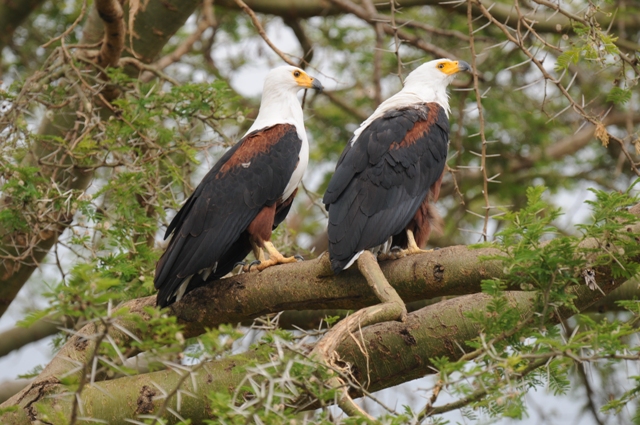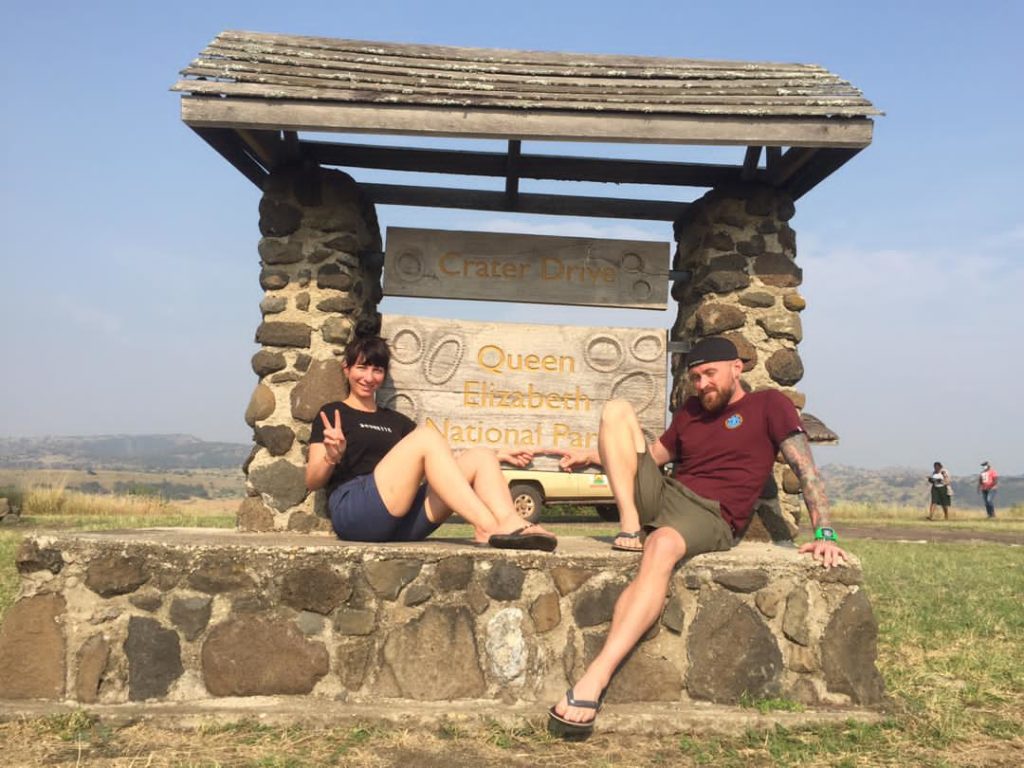
Queen Elizabeth national park is a classic safari destination despite a few twists. The 1978km2 has an impressive variety of habitats from swamps, rivers, forests, crater lakes, and acacia woodland. It was founded in 1952 as Kazinga National park before it was renamed two years after the visit of Queen Elizabeth II to commemorate her visit.
The park is set in the backdrop of the Rwenzori Mountains and for over 3 million years the mountains have witnessed nature at the park. The fantastic scenery of the park makes it easy to explain why the park is Uganda’s most popular safari destination.
Queen Elizabeth National park is bookended by Lakes George and Edward that are joined by the 40km Kazinga Channel and it is strategically located near other parks like the Eden of Mountain Gorillas (Bwindi that is just 62km south, Rwenzori mountains National park, Kibale Forest national park, and Semliki National park. The park hosts an extraordinary wilderness with 95 mammals that include the tree-climbing lions of the Ishasha sector, chimpanzees of Kyambura Gorge, Elephants, leopards, and over 600 bird species (the most at any single park in East Africa). It is tag-lined as a “Medley of Wonders”.
To do at the park
Game drives
Game drives in Queen Elizabeth National park are done in two regions the northern part (The channel drive to Mweya) and the Kasenyi plains and the southern part that is made of Ishasha which is famous for tree-climbing lions.
The Kasenyi plains go as far as Lake George and are a real African savanna. The plains are filled with large mammals and a reliable place to see lions at the park and if you have a customized open roof vehicle, you enjoy a drive so up close and personal with the magnificent animals here.

Boat safari
On the stretch that joins lakes Edward and George (Kazinga Channel) boat safaris take place. It is a popular activity here that you won’t miss. The cruise is a relaxed way to watch animals that come to the banks to beat the heat and drink. Elephants, buffaloes, waterbucks, crocodiles are regular visitors and the channel is a perfect spot to see a variety of water birds like the Pink-backed pelicans, yellow-billed stork, plovers, Water thick knees, skimmers, ibises, herons, egrets, cormorants, and others.

Chimpanzee tracking
In the mystical forest-filled valley of Kyambura, there is a small population of chimpanzees mostly known as “Lost chimpanzees” that got the gorge nicknamed the “Valley of Apes”. This is the only population of chimpanzees at the park and you can track them with the help of a ranger guide. Finding these chimpanzees is not always guaranteed but the experience down here is a rewarding one. You get to meet hippos of the Kyambura River, resident monkeys, and birds.

Birding
Saying that the park offers the best birding spot in Africa, is no exaggeration. Its different habitats host over 600 species in such a small space. It is the second-highest of any park on the African continent. Get to tick species from nightjars, raptors, like the fish eagle, martial and crowned eagles, vultures, kestrels, water birds, like crakes, rollers, pelicans, kingfishers, among others.

Crater drive
If you love Africa’s wild spaces, each has a unique beauty to offer and Queen Elizabeth national park is no exception. On its north side, the explosion craters from Kikorongo to Katwe poke mark it. The 27km stretch is made of calderas/craters some filled with vegetation others with salt waters. These are all that is left of the volcanic eruptions that happened millions of years ago and also imagine the violence. The lakes here include the Katwe salt lake, where rock salt is mined, Lake Kamengo, Nyamunuka, and the twin lakes in the Kyambura area.

Visit Maramagambo Forest
This is one of Uganda’s biggest forests amidst Queen Elizabeth National park. Birders engage in walks to find some of the specials and it houses forest elephants. There is a popular walk to the bat cave where hundreds of fruit bats rest daily. The trails here are well defined though you need a ranger to guide you.
How to get to the park
The park is 389km from the capital/Kampala and can be accessed by Road using Kampala-Masaka Road via Mbarara and Bushenyi or from Fort Portal via Kasese and also from the southwest (Bwindi) just 62km from the Buhoma sector. By air from Entebbe or Kajjansi to Kasese airstrip or Mweya Airstrip.
Where to stay
The park has a variety of facilities that accommodate people of all ranges from budget, mid-range, and luxury.
Budget: Pumba Safari Cottages, Albertine Rift Valley Lodge, Mweya hostels, and campsites.
Mid-range: Elephant Hab Lodge, Kingfisher Lodge, Park View Safari Lodge, Twin Lakes Lodge, Bush Lodge
Upmarket: Katara Lodge, Mweya Safari Lodge, Elephant Plains, Kyambura Gorge Lodge
African Rock Safaris LTD is a Ugandan based tour operator company that specialises in independent and group travel packages to East Africa. Our team has a wealth of experience in dealing with East Africa, having sent a large number of travellers from around the world to the region over the years.
Reach us via WhatsApp
African Rock Safaris LTD is a Ugandan based tour operator company that specialises in independent and group travel packages to East Africa. Our team has a wealth of experience in dealing with East Africa, having sent a large number of travellers from around the world to the region over the years.
Kimanthe Avenue, Kampala Uganda